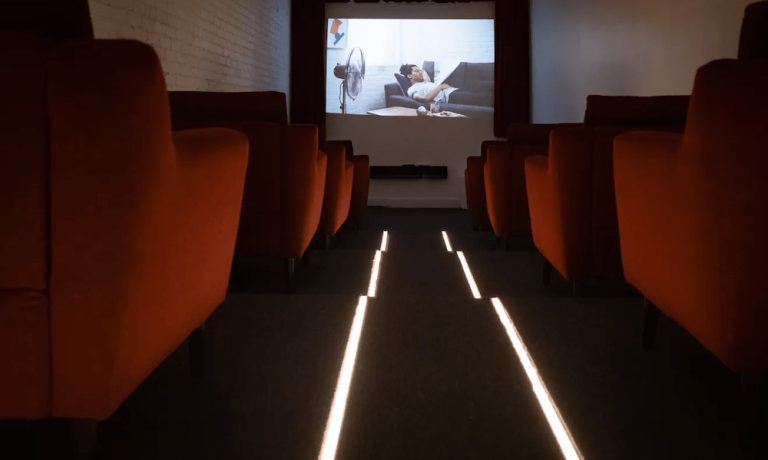
According to recent research from Furniture Village, the average couch has a much fuller and longer life than you probably realize. Over the course of its 11-year life it will host 2,728 hours of reading, 2,299 hours of phone conversations and 2,105 kisses between couples. Its cushions will also be ransacked for a lost remote control about 421 times.
And while couches — and the hours spent lounging on them — are much beloved by consumers, buying a couch is often a much less life-affirming experience than owning one. That’s particularly true for anyone who lives in an apartment building above the first floor. Buying a couch at a store has the advantage of immediacy, but there’s the difficulty of transporting a large, unwieldy 350 pound (on average) object from the store into one’s home.
But ordering online doesn’t do all that much to improve the situation, Burrow CEO Stephen Kuhl noted in an interview, as it swaps one set of problems for another and fails to solve for the biggest problem of all.
“They [the couches] will take several weeks, if not months, to ship, and with curbside delivery, you’ll have to get a big, bulky couch into your home unless you pay a few hundred dollars for a white-glove service,” he said.
If the couch is to go into a first-floor living room, he noted, that might be difficult and annoying feat. If that couch is going into the living room of fifth-floor walkup, he said, the experience may be likened to a “nightmare.”
Burrow was founded to provide a couch-buying experience without the drama and terror of actually trying to move and install a couch by offering up a new modular design that can be walked up in individually-boxed pieces and easily assembled in the right place. In much the way that firms like Casper and Purple have been pushing the mattresses-in-a-box as the best way to buy, Burrow is adapting the idea for other pieces of furniture. Hence the couch-in-a-box — or boxes, to be precise.
“We didn’t want to reinvent the sofa; we just wanted to make a way for people to get one faster, for less money, and then get it into people’s homes easily,” Kuhl said.
And on both points Burrow delivers with what it calls “the most adaptable furniture in the world” — a newly-ordered couch comes in about a week and can be fully put together without any specialty tools. The furniture is not inexpensive — pricing starts at $495 for an armchair to $1,545 for a king sofa with a chaise lounge — and there is similar mid-century modern design furniture to be had on Amazon or Wayfair for lower price points. But the assembly process is highly reviewed as incredibly intuitive and easy and the furniture itself is reviewed as comfortable and creative. Consumers seem to particularly like the built in USB port for phone-charging that the furniture features.
And though the firm is relatively young, having launched in 2017, it is moving quickly from an online-only DTC brand into an omnicommerce player with the opening of its first physical store in SoHo.
The shop’s unique twist? It is designed to around the experience of owning a couch — instead of buying one.
The Burrow House, as the shop is called, is by Kuhl’s description “our expression of a home, and the entire point is to celebrate moments of relaxation.”
To make that celebraton work, the store is divided into four segments: Shop, Relax, Play and Watch.
The Shop section, unsurprisingly, features everything there is to buy — from couches to Burrow pillows and blankets. The Relax section offers up a greenhouse ceiling, woven rugs, paper lanterns, fluffy Burrow pillows and a brick fireplace decorated with fresh flowers. The couches are set up so customers can … well, relax, and read a book or just listen to the restful music coming from a Sonos speaker. The Play section is described as the “Instagram bait” that has become part and parcel with a lot of experiential retail: It features a camera set up in front of a Burrow couch and a green screen with moving backgrounds, so customers can snap that winning shot of themselves relaxing photogenically. The Watch section is set up with Netflix dim lightning and a series of chaise lounges.
And the store experience itself, according to Kuhl, is designed to be low pressure. Visitors are offered coffee and tea, and sales associates are instructed to tell guests to “Make yourself at home,” while they are visiting. And if they only visit, and don’t buy? That’s actually OK, Kuhl said, because Burrow is in some sense trying to build out the most pleasant “showrooming” experience in retail. Other merchants try to fight that tendency of consumers trying a product in real life and then buying it online, but Kuhl said Burrow believes that instead of trying to fight such practices, the best thing it can do as a brand is find better ways to lean into them.
“The point of this store is not to sell; it’s to get people to experience our brand,” Kuhl said. “Hopefully, when they’re in the market for a couch, they’ll buy online later on.”